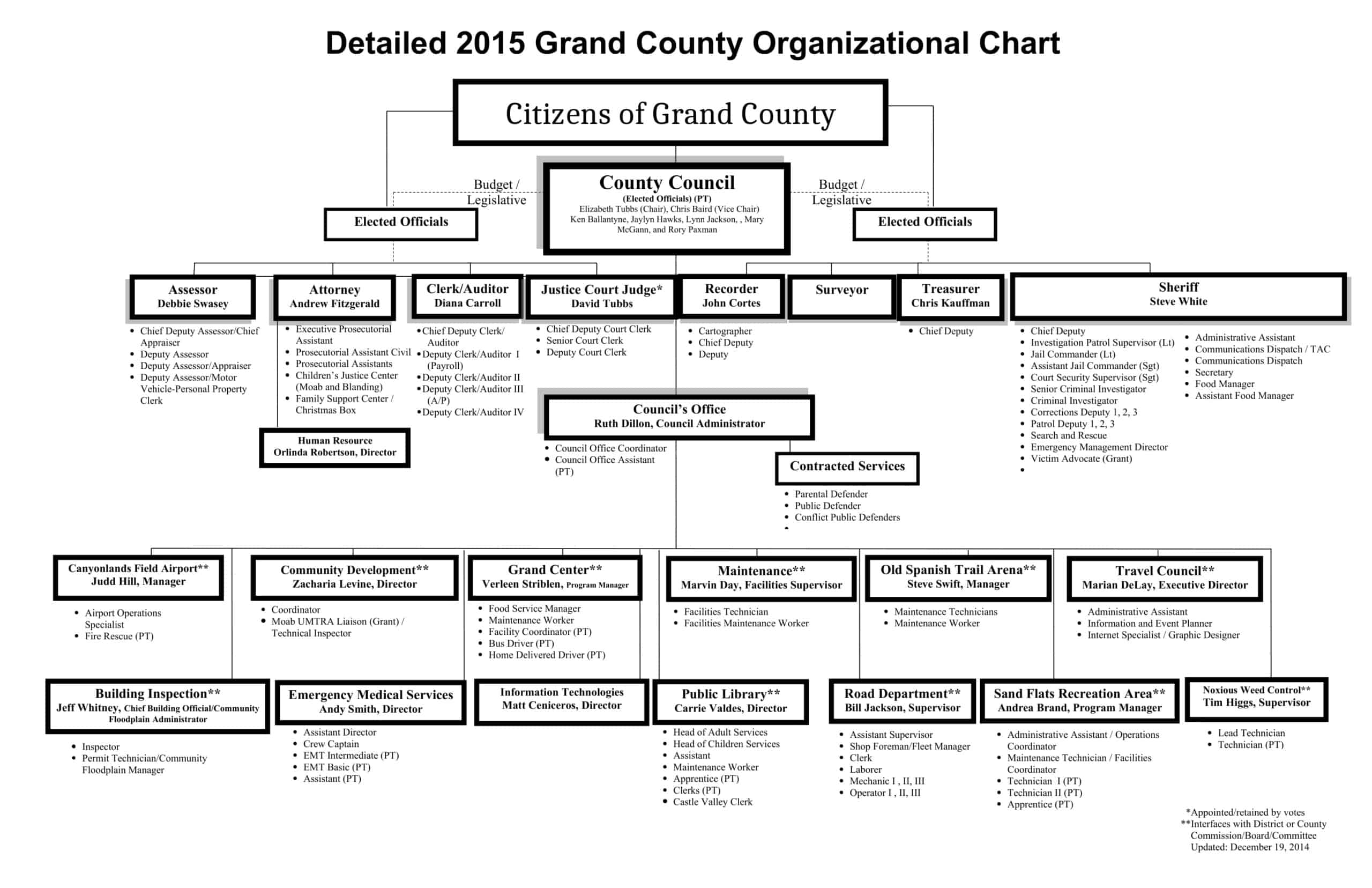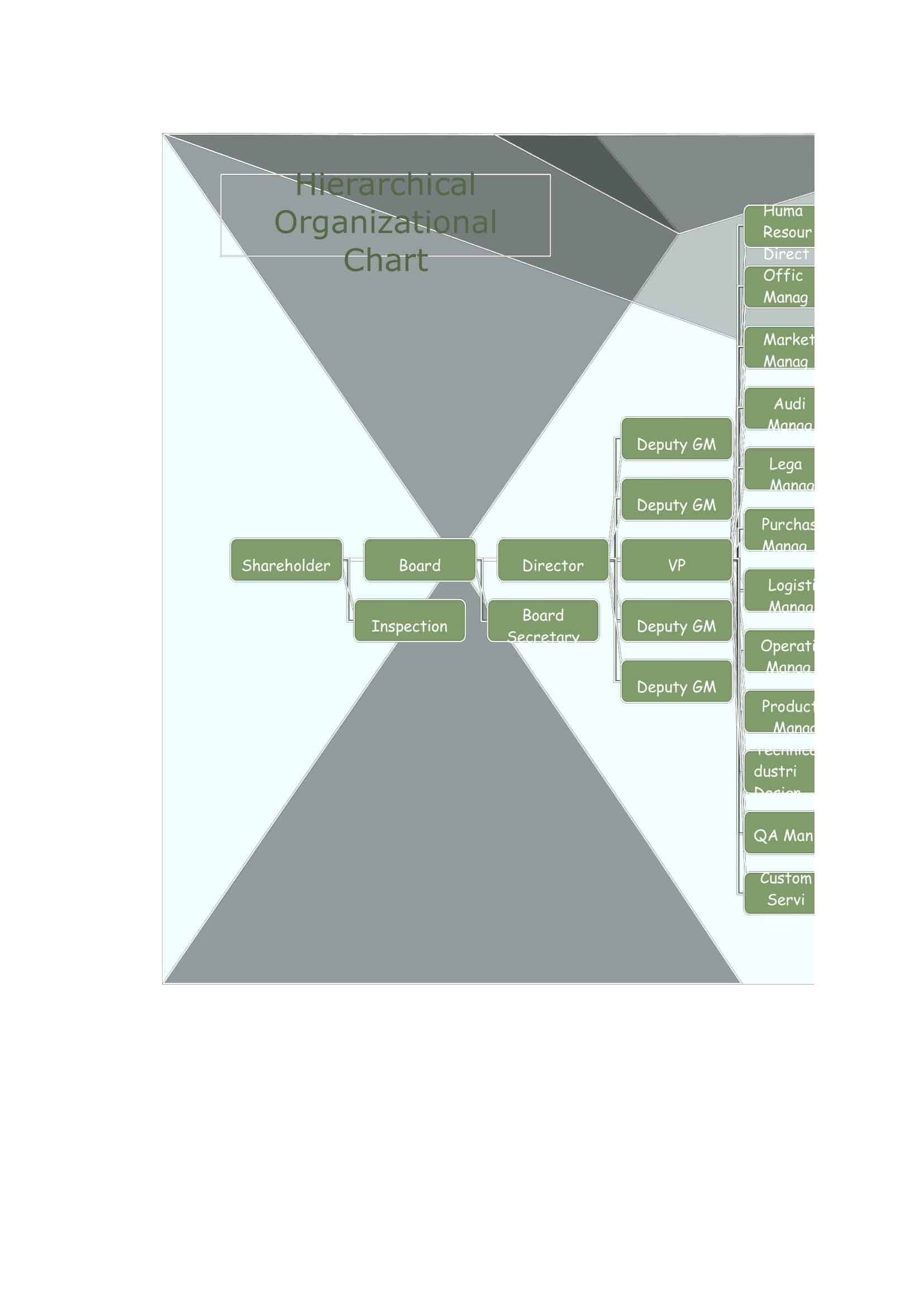An organizational chart is a visual diagram that represents the structure of a company.
All businesses have an organizational structure, whether we are aware of it. Although some organizational charts are formed and developed organically, it becomes important to be conscious and think about your organizational structure, especially as the number of personnel increases and the company becomes more and more complex.
Even though companies share business models, industries, and sizes, their organizational charts can differ significantly because a structure that works for one company may not work for another company. So which organizational chart best represents your brand and company? In this article, you will find the answer to this question.
Table of Contents
Organizational Chart Templates
Organizational Chart Templates are visual representations of the structure and hierarchy of an organization. They provide a clear and concise overview of how different departments, teams, and positions are interconnected within the organizational framework. These templates help to depict reporting relationships, lines of authority, and the overall organizational structure in an easily understandable format.
Organizational Chart Templates can be created in various formats, including hierarchical, matrix, or flat structures, depending on the organization’s specific needs and preferences. They can be designed using software tools, such as Microsoft PowerPoint, Excel, or specialized organizational chart software.
The templates provide a valuable visual tool for employees, stakeholders, and external parties to understand the organizational structure and how various roles and departments fit together. They promote transparency, communication, and clarity within the organization, enabling better coordination, collaboration, and decision-making.
What is Organization Chart?

Organization charts are used by design to communicate the organization’s beliefs, values, culture,, and philosophies. It highlights how teams and departments are organized, company-wide reporting relationships, and the roles and responsibilities of each individual. It is the daily guide that manages employee tasks, interactions, and reporting.
An organizational chart can summarize the structure of a business or organization or represent different elements of a knowledge area. In fact, the overall idea of the organizational chart is that it presents a clear and all-encompassing picture of the entire company.
Importance of Organizational Charts
An organizational chart is used for many reasons and can be structured in many ways. You can use these diagrams to show relationships from one person to another, from one department to another, or various functions in a company. Organizational charts can serve many purposes, from management tools to project planning to the staff directory.
The organizational chart probably has more benefits than it seems. Because it explains the workflow and responsibilities, it’s a quick way for employees to understand where to go for help or to respond to specific issues.
If an organizational chart is well established, it can significantly impact company operations and customer experience. It gives your team clear information and direction when they need it most. If done poorly or not done at all, it can impede your company’s communication and collaboration capabilities.
Because it displays a crystal-clear reporting structure and hierarchy, both employees and leaders know instantly who to contact. It provides a clear understanding of the human resources of the entire company, making workloads easier to manage. It encourages broader collaboration by providing an easy-to-read visual of who works in other departments where you may not cross paths as often. It truly enables better communication, increases transparency, and keeps your team connected.
Organization Chart Types
There are various organizational charts. These can be listed as follows:
Hierarchical Organization Chart
The hierarchical organization chart, shaped like a pyramid, is the most common organizational chart. To show a relationship with this diagram, you connect people with a simple line and create a flow from top to bottom to the frontline employees. The most important feature of the hierarchical organizational chart is that everyone in the company -except one person- is subject to a single person. This person, who is not dependent on anyone, is the person with the greatest authority in the company. This can be the CEO, sometimes the president, and sometimes the company owner.
Matrix Organization Chart
A key feature of a matrix organizational structure is that some employees may report to more than one leader. In this diagram, relationships are defined by a solid or dotted line. While the meaning of solid and dotted lines varies, dotted lines typically indicate less significant relationships. A matrix scheme works best for cross-functional teams that do not maintain a rigid vertical business unit. It is popular in project management because it provides greater visibility into the company’s existing staff resources, disrupts the flow of information, and ultimately creates greater transparency.
Flat Organization Chart
A flat organizational chart, also known as a horizontal organizational chart, is especially popular with small businesses just starting out. Because they work with a smaller staff and have not yet grown to have larger departments and middle managers. Flat organizational structures give employees more responsibility and encourage clearer communication flows. It improves the speed and coordination of implementing new and innovative ideas. The downside is that it can create confusion as there is no clear manager to report to and reward employees with more general skills and knowledge.
Divisional Organization Chart
This organizational chart groups the company by more extensive activities, market, geography, or product and service groups. Large multinational companies tend to prefer a split structure because they are too large to fit into a traditional organizational chart. This scheme provides flexibility because each department operates independently and focuses on matters about them versus the orders of a central authority.
Functional Organizational Chart
It is an organizational structure developed by Henry Ford and Frederick Winslow Taylor. The most distinctive feature of this structure is that it is based on the principle of specialization. The execution of functions in the enterprise is entrusted to specialist personnel. In the functional organizational structure, There are units such as production, marketing, human resources, finance, and R&D. Here; orders do not have to proceed in a hierarchical structure.
Considering the duties, orders can be given between the relevant units. Things can be resolved more quickly in a functional organizational chart. A harmonious and flexible working environment is provided. Employees’ abilities are effectively utilized. Separating the task into functions causes the personnel to specialize in their own work. The disadvantage of this structure is that expert personnel play an active role, and if the person leaves the job, the functioning can be troubled.
How to Create an Organization Chart?
Organization chart creation spans a wide work area and needs enterprise system support at every stage. Each position in this scheme is created according to the duties and responsibilities shaped within the framework of the main departments.
The main departments in the organizational chart are as follows;
- Marketing
- Sales
- Buy
- Production
- Financial affairs
- Administrative affairs
The features to be considered to create a successful organizational chart are as follows;
- Diagrams should not be produced in a private position; they should adhere to departments.
- The organizational chart should be created as a result of the requirements of the process.
- The system should be built on the logic of working according to the task, not in the form of a task according to the employee.
- To create a successful organizational chart, the basic departments of the business must be determined.
- Departments or sub-units should be correctly associated with each other.
- When looking at the organizational chart, it should be easily understood who works for whom and with whom in cooperation with whom.
- Job descriptions should be included in the chart.
- When employees look at this chart, they should be able to make their career plans correctly.
- Newly recruited employees should be able to look at this diagram and position themselves correctly.
- The organizational chart should include even the positions and departments that are not yet in the business.
- It should be important that employees follow new units that will be formed in the future.
It should not be forgotten that a well-prepared organizational chart will contribute to the institutionalization of companies. The organization chart preparation process must be done in the light of comprehensive analyzes and evaluations. Thanks to advanced management and organizational skills, businesses can work more efficiently and harmoniously. Thanks to good management and organizational training, businesses can make more profit and find an easier way out of problem solutions.
What makes a perfect organizational chart?
It should not be forgotten that a well-prepared organizational chart will contribute to the institutionalization of companies. The organization chart preparation process must be done in the light of comprehensive analyzes and evaluations. Thanks to advanced management and organizational skills, businesses can work more efficiently and harmoniously.
How to Create a Successful Organization Chart?
To create a successful organizational chart, the basic departments of the business must be determined. When looking at the organizational chart, it should be easily understood who works for whom and with whom in cooperation with whom. The charts should not be produced in a private position but should depend on the departments.
FAQs
Is there an organizational chart template in Word?
Yes, Word provides various downloadable org chart templates accessible right within document searches. Just type in “org chart” templates under New documents to insert ready-made layouts to start detailing company structures using built-in visualization tools.
Does Excel have an organizational chart?
Excel contains Organizational Chart templates under New documents > Business templates that auto-generate org structure visuals after entering department groups and roles into linked data tables. Easily add new positions, rearrange flows by dragging boxes, customize visuals, and export charts.
How do I make an organizational chart in Google Docs?
In Google Docs, navigate to Insert > Drawing > + New to begin a blank diagram. Add shapes for divisional boxes, give leader names and role titles, use arrows with plus icons to connect flows between management layers, color code by department, resize to refine layouts showing reporting lines.
What is the best Microsoft program to create an organizational chart?
The best Microsoft programs for org charts are PowerPoint for quick simple diagrams using built-in chart creation wizards under Insert > Illustrations, or Visio for advanced data-linked charts with dynamic update capabilities when positions change, custom fields per node, and publishing/sharing integration.
What is the free tool to create org charts?
Free intuitive tools for crafting organizational charts are apps like Canva providing professional templates, Lucidchart which is collaborative for real-time editing, OrgChart Now enabling chart links to Excel data, SmartDraw’s extensive org chart options, and Pingboard helping managers better understand team structures through data visuals.
What are the 4 types of organizational charts?
The 4 main types of organizational charts are:
- Hierarchical – Top-down vertical chain of command
- Matrix – Shows cross-departmental decision-making structure
- Flat – Minimal management layers empowering staff
- Circular – Central leadership with peripheral specialized teams






























![Free Printable Pie Chart Templates [Excel, PDF, Word] Maker 1 Pie Chart](https://www.typecalendar.com/wp-content/uploads/2023/06/Pie-Chart-150x150.jpg 150w, https://www.typecalendar.com/wp-content/uploads/2023/06/Pie-Chart-1200x1200.jpg 1200w)
![%100 Free Hoodie Templates [Printable] +PDF 2 Hoodie Template](https://www.typecalendar.com/wp-content/uploads/2023/05/Hoodie-Template-1-150x150.jpg)
![Free Printable Food Diary Templates [Word, Excel, PDF] 3 Food Diary](https://www.typecalendar.com/wp-content/uploads/2023/05/Food-Diary-1-150x150.jpg 150w, https://www.typecalendar.com/wp-content/uploads/2023/05/Food-Diary-1-1200x1200.jpg 1200w)
